Introduction to Natural Resources in Nepal
Nepal is a land-locked country situated in the Himalayas between India and Tibet. The country is known for its stunning natural beauty, with majestic mountain ranges, pristine forests, and rolling hills. Natural resources are an integral part of the economy and culture of Nepal, providing both livelihoods and recreational opportunities for its citizens. From forests and water to minerals and wildlife, Nepal is blessed with a rich abundance of resources that have the potential to contribute significantly to its development.
In this essay, we will take a closer look at the natural resources in Nepal, including their types, distribution, and importance. We will also examine the challenges that Nepal faces in managing these resources effectively and the efforts being made to conserve them. This essay aims to provide a comprehensive overview of the natural resources in Nepal and their role in the country’s economy and environment.
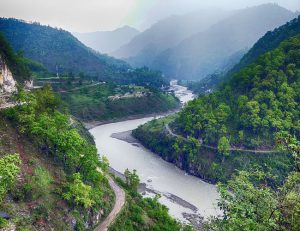
Importance of Natural Resources for Nepal’s Economy
Nepal is a country that is rich in natural resources, including water, forests, minerals, and fertile land. These resources are vital to the economic development of the country and play a crucial role in the lives of millions of people. In this article, we will discuss the importance of natural resources for Nepal’s economy.
Forests and Natural Beauty: Nepal is home to a diverse range of forest types and vegetation, making it a popular tourist destination. The country’s forests provide vital ecosystem services, including watershed protection, carbon sequestration, and habitat for wildlife. In addition, the natural beauty of the forests is a major draw for tourists, generating significant revenue for the country.
Agriculture: Agriculture is the backbone of Nepal’s economy and a significant source of livelihood for millions of people. The country’s fertile land, abundant water resources, and favorable climate conditions make it ideal for agriculture. Agriculture contributes to the country’s GDP, providing food, fiber, and other essential products.
Hydropower: Nepal is known for its abundant water resources and has the potential to generate substantial amounts of hydropower. Hydropower is a clean and renewable source of energy that can contribute to economic growth and reduce dependence on imported fuels. The development of hydropower projects has the potential to create jobs, attract investment, and improve energy security.
Minerals: Nepal is rich in minerals, including iron ore, coal, limestone, and other minerals. The exploitation of these minerals can provide a significant boost to the country’s economy, creating jobs, increasing government revenue, and attracting investment. However, it is important to ensure that mining activities are carried out in an environmentally sustainable manner.
Also Read :- Mahatma Gandhi: Inspiring a Movement for Change
In conclusion, natural resources play a crucial role in Nepal’s economy. The country’s forests, fertile land, water resources, and minerals provide vital ecosystem services and support the livelihoods of millions of people. By leveraging these resources, the country has the potential to achieve sustainable economic growth and improve the quality of life for its citizens.

Types of Natural Resources in Nepal
Water Resources: Nepal is known for its abundant water resources with numerous rivers, lakes and glaciers. Some of the major rivers in Nepal include the Ganges, Indus, and Brahmaputra, which are crucial for agriculture, fishing, and hydropower generation.
Forest Resources: Forests cover about 30% of the total land area of Nepal and provide a wide range of benefits to the country, including fuelwood, timber, medicinal plants, and wildlife habitat.
Mineral Resources: Nepal is rich in minerals such as limestone, iron ore, coal, magnesium, and gold. These resources are essential for the construction, manufacturing, and energy industries.
Agricultural Resources: Nepal is a predominantly agricultural country, with over 80% of its population relying on agriculture for their livelihood. Rice, wheat, maize, and millet are some of the major crops grown in the country.
Wildlife Resources: Nepal is home to a diverse range of wildlife species, including tigers, rhinos, elephants, and monkeys. These resources are crucial for ecotourism, which provides a significant source of income for local communities.
Hydro Power Resources: Nepal has significant potential for hydropower generation, with numerous rivers and streams flowing through the country. This renewable energy source provides a sustainable alternative to fossil fuels and is an important contributor to the country’s economy.
Cultural and Heritage Resources: Nepal is famous for its rich cultural and heritage resources, including monuments, temples, and palaces. These resources are valuable for tourism and play an important role in preserving the country’s cultural identity.
Challenges faced by Nepal in Managing its Natural Resources
Nepal is a landlocked country in South Asia, rich in diverse and abundant natural resources. However, despite having a plethora of natural resources, Nepal faces numerous challenges in managing them effectively. Some of the major challenges faced by Nepal in managing its natural resources are discussed below.
- Limited Awareness: Nepal has a large rural population, where most people are illiterate and lack awareness about the importance of natural resources. This leads to over-exploitation and destruction of natural resources, which affects the country’s overall development.
- Lack of Government Support: The government of Nepal lacks adequate financial and technical resources to effectively manage natural resources. There is also a lack of political will to implement conservation and sustainable management programs, which results in the mismanagement of natural resources.
- Corruption: Corruption is a major challenge in Nepal, and this also extends to the management of natural resources. Lack of transparency in the allocation and management of resources often leads to their exploitation and destruction, leading to an imbalance in the ecosystem.
- Unplanned Development: Unplanned development activities such as deforestation, illegal logging, mining, and other commercial activities often cause severe damage to the environment and natural resources. This results in degradation of the environment, reducing the capacity of natural resources to provide benefits to the local communities.
- Climate Change: Climate change is a major challenge to the management of natural resources in Nepal. Changes in the pattern of rainfall and temperature affect agriculture, forestry, water resources, and other ecosystem services, which impacts the livelihoods of local communities.
- Geographical Challenges: Nepal’s mountainous geography poses a significant challenge to the management of natural resources. The country’s inaccessible terrain makes it difficult for the government to monitor and enforce conservation and sustainable management programs.
In conclusion, Nepal faces numerous challenges in managing its natural resources, but with effective government support, increased awareness, and the implementation of sustainable management programs, these challenges can be overcome. Effective natural resource management is crucial for the country’s overall development and the well-being of its people.
Also Read :- Sundar Pichai : Inspirational Biography, Education, Family and Unexpected Salary of $2M+
Role of Government in Preserving Natural Resources in Nepal
The government of Nepal plays a crucial role in preserving the country’s natural resources, which are essential for the sustainable development and well-being of its people. Natural resources in Nepal include forests, water, minerals, and wildlife, among others. These resources provide numerous benefits, such as providing livelihoods, maintaining ecological balance, and conserving biodiversity.
Forests: Forests cover approximately 37% of Nepal’s land area and are crucial for maintaining the country’s ecological balance. The government has implemented various measures to protect forests and prevent deforestation. For example, the Forest Act of 1993 prohibits the unauthorized felling of trees, and the government has established protected areas, such as national parks and wildlife reserves, to conserve wildlife and forests. Additionally, the government has launched programs to promote sustainable forest management, such as community forestry, where local communities are involved in the management and conservation of forests.

Water: Nepal has abundant water resources, including rivers, lakes, and glaciers, which are essential for agriculture, industry, and drinking water. The government has implemented various measures to conserve and manage water resources, such as the Water Resource Act of 1992 and the National Water Plan of 1992. These laws and policies aim to ensure equitable access to water and prevent water pollution.
Minerals: Nepal has rich deposits of minerals, such as limestone, quartz, and iron ore, which are essential for various industries, including construction, manufacturing, and energy. The government has implemented various measures to manage mineral resources, such as the Mines and Minerals Act of 1992, which regulates the exploration, exploitation, and conservation of minerals. Additionally, the government has established the Department of Mines and Geology to oversee the management of mineral resources and ensure sustainable and responsible mining practices.
Wildlife: Nepal is home to a rich diversity of wildlife, including rare and endangered species, such as the Bengal tiger and the one-horned rhinoceros. The government has established various protected areas, such as national parks and wildlife reserves, to conserve wildlife and prevent illegal hunting and poaching. Additionally, the government has launched programs to conserve wildlife, such as ecotourism, which generates income for local communities and supports conservation efforts.

In conclusion, the government of Nepal plays a critical role in preserving the country’s natural resources, which are essential for the sustainable development and well-being of its people. The government has implemented various measures, such as laws and policies, protected areas, and programs to promote sustainable management and conservation of natural resources. The government’s role in preserving natural resources is crucial for ensuring their long-term sustainability and the well-being of future generations.
Also Read :- Xiaomi Unveils MIUI 14 Global Release for 12 Flagship Devices: Experience the New Android 13-based UI
Community-Based Natural Resource Management in Nepal
Community-based Natural Resource Management (CBNRM) is a critical approach to the sustainable management of natural resources in Nepal. This method of resource management is based on the principle of empowering local communities to participate in the management and decision-making process of the natural resources that affect their lives. The aim of CBNRM is to balance the interests of the local communities, governments, and businesses to ensure that the resources are used for the benefit of all stakeholders.

In Nepal, CBNRM has been implemented in various forms to conserve and manage the country’s vast natural resources, including forests, wildlife, water resources, and land. CBNRM is based on the idea of decentralizing the management of natural resources to the local communities. This approach has been successful in conserving and sustaining the resources while promoting the economic development of the communities.
The government of Nepal has been promoting CBNRM as a means of achieving sustainable development. The government has established various laws, policies, and institutions to support the implementation of CBNRM. For example, the Forest Act 1993 and the Community Forest Management Regulation of 1995 provide the legal framework for the management of community forests.
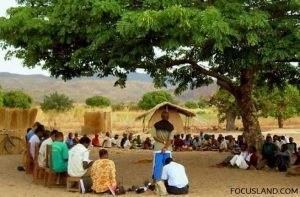
In addition, the government has established the Community-based Natural Resource Management Program (CBNRMP) to provide technical and financial support to communities in their efforts to manage natural resources. The program has been successful in creating a collaborative relationship between the communities, the government, and the private sector to conserve and manage the resources.
The success of CBNRM in Nepal is evident from the increase in the number of community-based organizations (CBOs) that are engaged in the management of natural resources. CBOs have been established in various regions of the country, and they play a critical role in the management of resources, including the protection of forests, wildlife, and water resources.
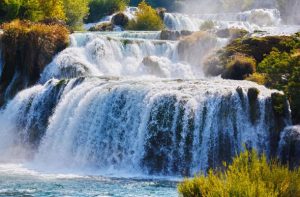
In conclusion, CBNRM is a critical approach to the sustainable management of natural resources in Nepal. The government, local communities, and the private sector must work together to ensure the successful implementation of CBNRM. This will ensure that the resources are used for the benefit of all stakeholders, including the preservation of the environment and the promotion of economic development.
Opportunities for Sustainable Development through Natural Resources in Nepal
Nepal is a country rich in natural resources and has the potential to become a leader in sustainable development. From forests to mineral resources, water resources to wildlife, Nepal has the potential to provide a high quality of life to its citizens while also preserving the environment for future generations.
One of the most significant opportunities for sustainable development in Nepal is the exploitation of its forests. With over 60% of its land area covered by forests, Nepal is one of the most forested countries in the world. These forests provide a vital source of livelihood for millions of people and are also a critical carbon sink. By promoting sustainable forestry practices and utilizing forest products, Nepal can protect its forests while also generating income and creating jobs.
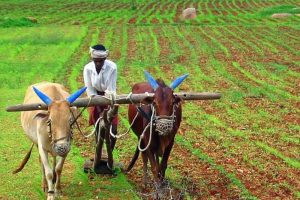
Another opportunity for sustainable development in Nepal is the utilization of its abundant water resources. With numerous rivers and lakes, Nepal has the potential to become a leader in hydroelectric power production. This not only provides a clean and renewable source of energy, but also creates jobs and drives economic growth.
Mineral resources, such as iron, copper, gold and mica, are also abundant in Nepal. The development of these resources can provide a significant boost to the economy and provide employment opportunities. However, it is important to ensure that this development is sustainable and does not harm the environment.
Nepal’s wildlife is also a major opportunity for sustainable development. With a wide range of flora and fauna, Nepal is home to many species that are found nowhere else in the world. By promoting sustainable wildlife tourism, Nepal can protect its unique wildlife while also generating income.
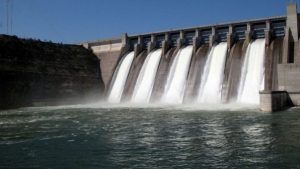
In conclusion, Nepal has numerous opportunities for sustainable development through the use of its natural resources. From forests to water resources to mineral resources, Nepal has the potential to provide a high quality of life for its citizens while also preserving the environment for future generations. By promoting sustainable practices and utilizing these resources wisely, Nepal can become a leader in sustainable development.
Conclusion and Recommendations for Sustainable Use of Natural Resources in Nepal.
In conclusion, Nepal is a country rich in natural resources, including forests, water resources, minerals, and wildlife. The sustainable use of these resources is crucial for the long-term economic and ecological health of the country. However, the current methods of resource extraction and use are unsustainable, and have led to environmental degradation, loss of biodiversity, and increased poverty.

To ensure the sustainable use of natural resources in Nepal, the following recommendations should be implemented:
- Development of sustainable resource management policies: Nepal should establish and enforce policies that promote sustainable resource management practices, including limiting over-extraction, reducing waste, and promoting efficient use.
- Promotion of eco-friendly technologies: Encouraging the use of environmentally friendly technologies and practices can help reduce the impact of resource extraction and use on the environment.
- Community involvement: Engaging local communities in the management and protection of natural resources can help ensure that resources are used sustainably, and that the benefits of resource use are shared fairly.
- Education and awareness: Raising awareness about the importance of sustainable resource use among the general public is crucial to ensure that people understand the impact of their actions on the environment.
- Investment in renewable energy: Investing in renewable energy sources such as solar and wind power can help reduce the dependence on non-renewable resources, while promoting sustainable development.
Also Read :- Class 12 Exam Date 2079/2080 – An Overview for the Students for Navigating the Upcoming Challenge with Confidence
In conclusion, the sustainable use of natural resources is essential for the long-term prosperity and well-being of Nepal and its people. By implementing these recommendations, Nepal can ensure that its rich natural resources are used in a responsible and sustainable manner, for the benefit of present and future generations.
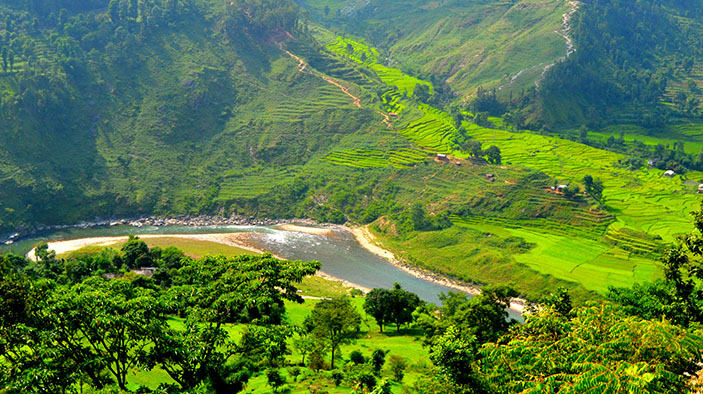
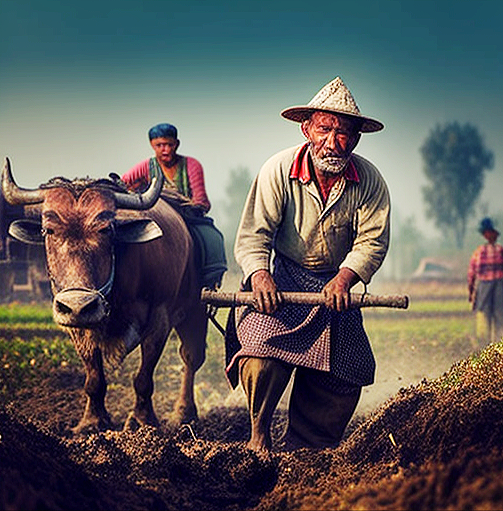
You’ve been great to me. Thank you!